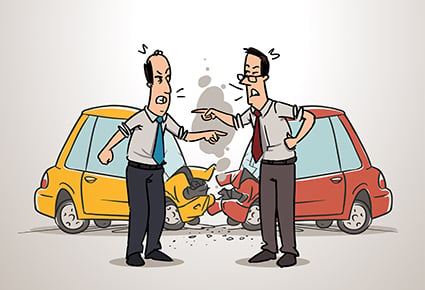What to do after a car accident – How this can help with your car insurance claim

No matter how careful of a driver you are, you can never be 100% sure you would not run into an accident on the roads. As drivers, we know there are too many uncontrollable factors.
That is why you need car insurance to protect you and your family.
It can still be stressful when an accident actually takes place, which is why we have summed up below a to-do list. This list is all you need to do in the event of an accident and taking the following steps will help ensure that you will be able to make a successful car insurance claim on your traffic accident.
1. Stop and check if anyone was injured
Be a responsible driver. The first thing to do in an accident is to stop your vehicle and check if the collision has caused injury to your passengers and / or anyone at the scene. Call 999 or 995 immediately if someone was injured.
The last thing you want to do is to leave the accident scene if it involves injury or damage to either private or public property as this is an offence.
2. Snap shots of the first scene
It’s normal that you wish to move your car to the side after a collision, especially if you are in the middle of a busy road. However, you are advised to do so only after you have ascertained and are sure that there are no injuries and that no one is in need of medical attention.
Also, you are advised not to do so until you have obtained all necessary first-scene snapshots. The photos should include:
- A zoomed-out view of the accident scene showing the involved vehicles and how they position relative to lane markings.
- Damages to your own vehicle and the other vehicle(s) clearly showing the licence plates on both cars.
These images can provide objective evidence to the insurers in helping them assess the cause of the accident and thus process the claim accordingly. Be reminded to turn on your hazard lights when you get out of your car for safety reasons.
If you have an in-car camera, remember to download and save the footage for submission to the insurer. Video evidence in the event of a traffic accident is extremely useful in helping insurers assess a claim.
Thereafter, if there are no injuries, move your vehicle away from the flow of traffic once possible to avoid creating an obstruction.
3. Call the police immediately if an injury is sustained by any party
For accidents involving injury, call the police and the ambulance immediately. The vehicles and injured parties should not be moved while you are waiting for help.
The following details of the car accident will be required in the filing of a police report:
- Date and Time
- Weather Conditions
- Road Conditions
- Location
- Particulars of all involved parties including full name, NRIC/FIN, contact number, address for both drivers and the car registration number of the vehicles involved
- Particulars of witnesses
- Details of the damage sustained by the vehicles
- Position of the vehicles at the point of collision
No matter how minor you think the accident is, if you are unsure whether you shall move your vehicle, call the police for advice.
A police report can also function as an official written record of the accident that insurance companies can rely upon in processing claims. Do take note of the details of the police officer too as this could be requested for by your car insurer.
4. Exchange particulars of involved parties
Exchange contact information and insurance information with the other party. This will include details of the driver including the driver’s full name and NRIC/FIN, contact number, address, car registration number and details of their car insurance company.
If possible, collect information like the names and contact details from any witnesses of the accident. And also take note of the weather and road conditions of the accident scene.
5. Report to your insurer
Irrespective of the damage extent of your vehicle or whether you intend to claim from the insurer or the third party, you should make a report with your insurance company within 24 hours, or by the next working day. This is the case even if there are no apparent damages to your vehicle.
Failing to do so could grant your insurer the right to reject your claim as they have not received a notification on the accident. This could also affect your No Claim Discount (NCD) or your policy renewal altogether.
Before requesting for a tow truck service or sending your vehicle to the repair workshop, seek the advice of your insurer at their accident hotline. Depending on the insurance policy you have, your cover may be limited by your insurer at selected workshops only. It is therefore vital to avoid unauthorized tow-truck operators and repair workshops*, which could hinder your claim against the other party.
Too much to remember? No worries, InsureDIY will provide claim support for all our car insurance clients. To learn more and to be kept updated, register today and you will be notified on our car insurance compare platform launch! Be the first to get multiple car insurance quotes on the best car insurance deals in town – we promise!
* Under the Motor Claims Framework (MCF) set up by the Land Transport Authority, you are guaranteed hassle-free and quality-certified repair services under the MCF. Report and bring your accident vehicle to the approved reporting centre within 24 hours or by the next working day.
InsureDIY has financial advisers that can help you make the right choice and answer any of your questions. Simply email us at [email protected] anytime!



